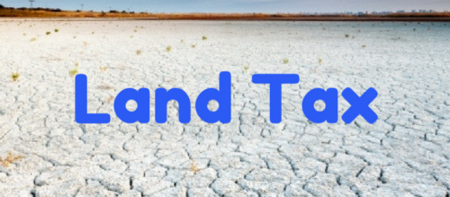Would you like a little land tax with your stamp duty?
STAMP duty reform is firmly on the menu in NSW even though the COVID-19 pandemic and the resulting job losses and mortgage stress mean that any Government serving up a new tax on owner-occupied property now would be heading for the Opposition benches at the next election.
A NSW Government report (commissioned before COVID-19 struck) recommends abolishing stamp duty and replacing it with a land tax. Stamp duty is a terrific revenue raiser for the NSW Government but only in boom times. It’s not so good when the real estate market is down in the dumps. The NSW Government raised around $7 billion, or 24 per cent, of annual tax revenue from transfer duty in 2018-19, making it the state’s second largest source of tax revenue. The first source is its slice of the federal GST revenue.
That $7 billion was coughed up by just 200,000 property owners. There were 2.8 million properties in New South Wales in 2018-19. This means only one in twenty property owners carried the burden of paying for the schools, roads, hospitals and other services that gives all properties a big part of their value.
The Government’s report comes up with four ways of levying a land tax on all property owners and then with four ways of introducing it to soften the blow to those disadvantaged by the new tax.
Option 1 is to replace both stamp duty and existing land tax on commercial and investment property with a new land tax that has lower tax rates for owner-occupied and higher rates for rental and commercial property.
Option 2 is to replace stamp duty, insurance duty and the Emergency Services Levy with a new flat rate land tax. The land tax on rental and commercial properties stays as is.
Option 3 is to replace stamp duty and existing land tax with a new land tax but with a progressive rate scale. The more your land is worth, the more you pay.
Option 4 is to replace stamp duty and the land tax on rental and commercial properties with a new land tax on capital-improved land values, which means the value of the house itself is also considered.
All four options have the same thing in common: anyone owning their own house pays land tax, which they currently don’t pay.
The report seems to have forgotten to mention that council rates are also a land tax and represent a not insignificant impost on low-income household budgets. The report also doesn’t mention that everyone pays council rates and that rate revenue pays for services and infrastructure, just like stamp duty.
Fortunately, the report does recognise that owner-occupiers would not be ecstatically happy about being hit with a probably hefty annual land tax (the report is silent on how much the tax would be) after paying an even heftier stamp duty when they bought their house.
To soften the blow, the report suggests four different ways of introducing land tax for all.
Option 1 is for stamp duty to be abolished, and all properties to become liable for the new land tax at their next sale. Existing properties remain exempt from the new land tax until sale.
Option 2 is Option 1 with the addition that a new buyer has the option of paying transfer duty or the annual land tax.
Option 3 is for stamp duty to be abolished, and all properties to become liable for the new property tax, but some or all current property owners are granted a credit to be used towards the new land tax liability.
Option 4 is for stamp duty rates to be gradually lowered while new land tax rates are increased over a period of years.
The last two options are presented with the comment that an “option for a tax deferral may be required for low income households”.
That means you rack up a tax debt against your house, to be paid once the house is sold. Not so bad if that’s after you have passed but trapping you in your house while you’re alive, although the report does spruik how much cheaper downsizing becomes.
But only if you’re rich, it appears.
